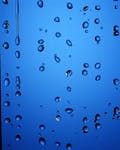Two U.S. producers of activated carbon, Calgon Carbon Corporation (“Calgon”) and Norit Americas, Inc. (“Norit”) re-filed their antidumping duty petition on March 8, 2006 that charges dumped imports of “certain” activated carbon from the People's Republic of China (PRC) are causing material injury to the domestic industry and alleges antidumping margins of 132% to 731%.
This re-filed petition comes on the heals of a similar petition only three weeks earlier that covered all “activated carbon” but was withdrawn by Calgon and Norit the day before the United States International Trade Commission (ITC) hearing on the matter. If successful, the Petition will almost certainly cause many importers to cease importing from China, which could result in shortages and interruptions in carbon supply that could cause drastic increases in carbon prices. Imposition of such duties and interruptions in supply will adversely impact customers, distributors and other market participants throughout the activated carbon industry.
The filing of the petition starts the process by which the United States Department of Commerce (DOC) will determine whether dumping exists and the ITC will determine if a U.S. industry is materially injured or threatened with material injury by the imports. The ITC must reach its preliminary determination of material injury or threat of material injury within 45 days or, in this case, by April 24, 2006. The Commerce Department is required to make its determination in 160 days unless it extends its deadline by up to 50 days. The Petition could result in duties of as high as 731% and importers could be required to pay a cash deposit or post a bond in this amount on shipments of certain activated carbon from China as early as May if Calgon and Norit allege that “critical circumstances” exist.
On January 26, 2006, Calgon and Norit filed their original petition with the ITC and the DOC alleging that Chinese producers of activated carbon were violation the U.S. dumping laws by selling into the U.S. market at prices below their cost of production. Immediately after the original petition was filed, various importers formed the Coalition of Importers of Activated Carbon (CIAC) and hired the international trade law firm of Bryan Cave LLP in Washington, D.C. to oppose the petition and defend against the case at the ITC. The CIAC filed comments with the DOC, which highlighted several deficiencies in the petition.
In particular, CIAC challenged whether the Petitioners had standing to bring the petition “on behalf of the domestic industry.” Under the antidumping law, a petition may only be brought “on behalf of the domestic industry” if those companies supporting the petition account for 25% of the total production of the domestic like product and 50% of the production of the domestic like product accounted for by those expressing support and/or opposition to the petition. Key to this analysis is the definition of the domestic “like product.” CIAC argued that the domestic like product should be expanded by the DOC to include reactivated carbon, a product identical to activated carbon in almost every respect. CIAC argued that with the inclusion of the domestic producers of reactivated carbon, Calgon and Norit would not meet the 25/50 percent tests for standing.
After receiving CIAC's comments, the DOC requested additional information from CIAC and from Calgon and Norit. On February 15, 2006, the deadline for the DOC to initiate the investigation, the petitioners withdrew their petition prior to the DOC making an official determination on initiation.
In its re-filed petition, Calgon and Norit attempt to limit the scope of product examined for purposes of evaluating standing and injury to the domestic industry to only “steam activated carbon.” They assert that “chemically activated carbon” should be excluded from the scope because chemically activated carbon is part of a distinctly different industry. Calgon and Norit argue that steam and chemically activated carbon steam and chemically activated carbon have clearly different physical characteristics and uses, are not interchangeable, have distinct channels of distribution, have different customer and producer perceptions, and (5) have completely different facilities and production processes.
Arguing that steam and chemical are distinct products appears to be an attempt to convince the DOC to exclude MeadWestvaco as a producer from consideration of whether Calgon and Norit meet the 25-50 percent test for standing to bring the petition on behalf of the industry. This appears to be an effort to patch up the problem of MeadWeestvaco not joining the petition (it also did not join the original petition). Additionally, Calgon and Norit also assert that reactivated carbon should be excluded from the scope. This also appears to be an attempt to prevent the DOC from considering several reactivated carbon producers as producers in an effort to pass the 25-50 percent test.
Counsel for the CIAC, Lyle Vander Schaaf, indicated, “the refiling of the petition appears to be an improper attempt to manipulate the antidumping duty law, contradict earlier arguments Calgon and Norit made, and circumvent the antidumping duty law’s requirements for standing to bring petitions.” In changing the scope of products covered by the new petition to include only “certain” types of activated carbon rather than all activated carbon and reactivated carbon, Mr. Vander Schaaf states that “Calgon and Norit not only ignore the reality of the activated carbon industry and market but also contradict the position they took before the DOC and ITC only three weeks ago in the earlier terminated case.”
Source: CC


